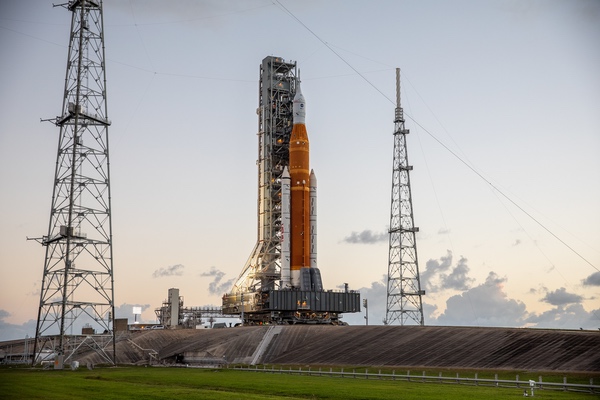Launching with cost-plus, landing with fixed-price: the financial underpinnings of a lunar returnby Tarak Makecha
|
| “We saw that the cost-plus contracts that NASA had been using to develop the combined SLS and Orion system worked to the contractor’s rather than NASA’s advantage.” |
It has taken 11 years from the start of the SLS development in 2011 to get the rocket to just lift off, six years behind schedule at an estimated $4.1 billion per launch—more than double its target. Paul Martin, NASA’s inspector general, called that cost “unsustainable.” Part of the blame can be attributed to cost-plus contracts, which NASA administrator Bill Nelson called a “plague” and the biggest threat to NASA’s goal of landing humans on the Moon by 2025.
In a cost-plus contract, the government pays a company the development costs plus a percentage fee, creating a perverse incentive. How? The longer the development, the higher the cost. The higher the cost, the greater the fees the company takes home. Which is why Martin told Congress, “We saw that the cost-plus contracts that NASA had been using to develop the combined SLS and Orion system worked to the contractor’s rather than NASA’s advantage.”
Fortunately, an alternative to cost-plus exists that reduces costs: competitive and milestone based fixed-price contracts. A fixed-price contract sets a price that is not subject to adjustment. This means the company picks up the bill for cost overruns rather than NASA. There is evidence to support its efficacy: according to a study by The Aerospace Corporation, fixed-price contracts experience 16% less cost growth than contracts using cost-plus.
One way fixed-price contracts contain costs is by incentivizing collaboration. If a company identifies requirements that are unnecessary and can convince NASA, they are removed. This saves the company money, and both the company and NASA time. This collaborative incentive does not exist in a cost-plus contract: more requirements leads to more cost which leads to higher fees for the company. As Elon Musk, CEO of SpaceX, notes, “The government will come up with some set of requirements, and 90% of them could make a lot of sense, and 10% are cockamamie that double the price of the project. But those 10% of cockamamie requirements in a cost-plus contract? The contractor will always say yes.”
Fixed-price contracts can also contain costs by being coupled with milestones and multiple vendors. Paying a company when they achieve a milestone, like a flight test, puts the focus on results. And the knowledge that there is another company working towards the same goal creates competition, leading to savings between 15 and 50%.
There is, however, a time and place for cost-plus contracts. A project that requires developing new technology brings less predictability in cost and timeline. This uncertainty means a company is less likely to bid with a fixed price contract. However, SLS is not new technology: it uses components from the Space Shuttle that first flew in 1981. And companies have been developing rockets independent of US government programs, leading the US Air Force to transition from cost-plus to fixed-price contracts for launching satellites. Why then does SLS use cost-plus contracts? Politics.
| Despite the cost-plus headwinds, there is reason to be optimistic. SLS is key to the Artemis program, but it isn’t the only show in town. |
After the Space Shuttle and Constellation programs were shut down over safety and cost concerns, a national debate emerged on the best approach for developing a domestic space transportation capability. Congress drove the decision to fund the Space Launch System that preserved many of the jobs from the old shuttle workforce and directed the agency to utilize existing Space Shuttle and Constellation cost-plus contracts, earning it the nickname of Senate Launch System.
Despite the cost-plus headwinds, there is reason to be optimistic. SLS is key to the Artemis program, but it isn’t the only show in town. The SLS will transport astronauts from earth to lunar orbit, but the task of taking astronauts from lunar orbit to the moon will be the job of the Human Landing System (HLS). The HLS was awarded to SpaceX using a milestone-based fixed-price contract. And NASA plans to award a second contract to develop another HLS from a company other than SpaceX, creating competition.
If HLS outperforms SLS in cost and schedule, it will add pressure on Congress to shift away from cost-plus and towards fixed-price contracts. A move that will help NASA catch up from Artemis’ poor start.
Note: we are using a new commenting system, which may require you to create a new account.
